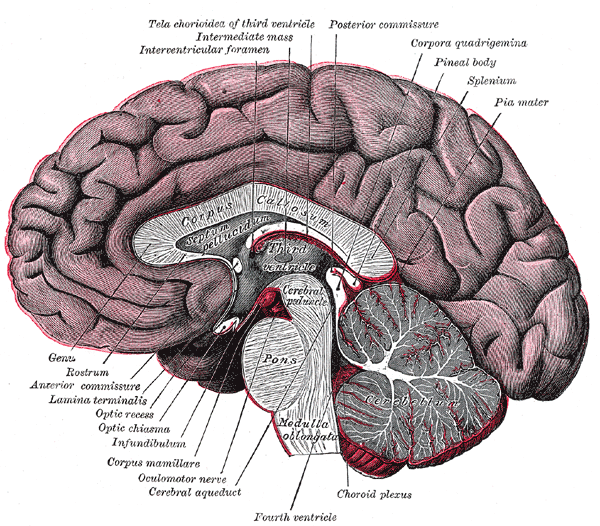Treating Trypophobia with Systematic Desensitization
Systematic desensitization or graduated exposure therapy is a type of therapeutic intervention used in psychology to overcome phobias and other anxiety disorders. The learned link between anxiety and objects or situations that are typically fear-producing can successfully be eliminated through numerous sessions of therapy. The situations that sufferers find stressful can have a significant impact on their ability to manage daily life. However, by substituting a new response to a feared situation, patients are trained to cope with these situations, and even severe phobias can be eradicated.
The Main Principles of Systematic Desensitization
This type of therapy is a form of counter conditioning developed by the South African psychiatrist, Joseph Wolpe in the 1950s. He conducted an experiment with cats and proved that they could overcome fears through gradual exposure. The animals were given mild electric shocks combined with specific sounds and images. At first, they associated fear with this stimulus, but when Wolpe replaced the shocks with feeding, the cats “unlearned” their fear. The experiment proved that emotional reactions could be classically conditioned. For example, if we constantly feel pleasure in someone’s company, then the mere mention that someone’s name can set off pleasant feeling. Following this rule, fear, anxiety and guilt may also be classically conditioned to some situations and stimuli. The therapy occurs in three stages:
- The identification of anxiety stimulus hierarchy
- Learning the coping techniques and methods of relaxation
- Connecting the stimuli (from the lowest rated to highest rated) to the incompatible response
The sessions usually include three anxiety hierarchy items and each one begins with the last item from the previous session. Until the patient has completely desensitized one item, he or she should not proceed to the next one.
Some research studies have shown that this type of phobia treatment does not depend on the intensity or duration of the patient’s anxiety. They also proved that the therapy is more effective in treating phobias acquired from personal experience.
Creating the “Anxiety Hierarchy”
First of all, the patient must identify all the items which are causing him/her to feel anxiety, discomfort, fear or any other unpleasant feeling. Each item is given a subjective ranking to form a catalog of fear-provoking situations. The stimuli are arranged from least to the most distressing one and the therapist and patient together deal with each item. For a person who is frightened by some animals like dogs, snakes and spiders, the hierarchy might start by seeing the pictures of the triggers and eventually viewing it from the distance, culminating with the confrontation to the feared object. The end goal is for the individual to learn how to cope with each item individually. After successfully establishing the “anxiety hierarchy”, the patient proceeds through the anxiety hierarchy searching for the individual coping mechanisms with the support of a therapist. Wolpe has taught his patients different relaxation techniques because he believed that it is not possible to feel anxious and relaxed at the same time. By using different methods, patients practice tensing and relaxing different parts of their body until they reach the state of complete serenity.
Learning Different Relaxation Methods
One of the simplest and easily acquired relaxation practices is Progressive Muscle Relaxation (PMR), originally developed by American doctor Edmund Jacobson in 1939. It is a procedure widely accepted by doctors who teach patients how to relax through a two-step process. At first, the patient tightens various muscle groups in his/her body deliberately applying the tension and causing the feeling of anxiety. After that, they stop the tension and focus the attention to how the muscles relax, releasing the induced tension. After discovering how muscles feel when they are completely relaxed, the patient is able to recognize the contrast between the initial tension and the subsequent feelings of relaxation and softening of the body muscles. The patient is then encouraged to recreate the relaxed sensation each time when they encounter the fear or anxiety stimulus. With physical relaxation comes mental stability and calmness. After learning the full PMR procedure, it is important to maintain the stability by repeating these stages for about ten minutes a day which will enable you to recreate the relaxed feeling intentionally in a variety of situations.
The deep breathing technique is one of the best ways to lower the stress in the body. By using this technique, we send a signal to our nervous system, i.e. the part of our body which manages the heart rate and our stress response, that we are relaxed and calmed. Instead of deep, lung-filling breaths, we take shallow, rapid breaths when we feel stress and discomfort. This type of breathing is also called thoracic or chest breathing, so instead of our diaphragm doing the lifting, our chest becomes tense which can make anxious feelings even worse. It disturbs the level of oxygen and carbon dioxide, resulting in an increased heart rate, nausea, dizziness, and muscle tension. This may serve as a signal to our body that something is wrong. The therapists tend to use different breathing techniques, but they all have these things in common, deep inhale through the nose and exhale through the mouth (as if you are whistling).
Pairing Relaxation Techniques with the Anxiety Hierarchy
In this step of systematic desensitization, the individual is asked to imagine being exposed to the fear trigger. When he/she starts feeling anxious, he/she is asked to pair the trigger with a relaxation technique. As tolerance develops, the patient moves on to the next trigger, So, for a patient who is afraid of some animals, he/she starts with imagining these animals and then asked to practice the relaxation technique, for example by visualizing a peaceful, stress-free setting. Thus, a gradual desensitization occurs, with the feeling of relaxation replacing the fear, stress, or discomfort. In the pre-computer era, patients underwent through exposure therapy by imagining the situations or in-vivo encounters. However, starting from the 1990s, virtual reality has become one of the most effective ways in terms of using different means of exposure therapy.
Desensitization and Trypophobia

Use systematic desensitization to trick your brain into liking Trypophobia
Phobias can affect your ability to function in work or social settings and cause numerous negative physical or psychological responses. However, the process of desensitization may give you enough power to move beyond the fear. For Trypophobes, this type of treatment can be very effective in restoring the usual mental and physical balance and harmony. A person with Trypophobia typically experiences anxiety, nausea, dizziness, and some other panic attack symptoms while just watching at small holes on lotus seed pods, sponge, honeycomb, etc. There is a general decline in performance and loss of coordination as well. With this phobia heartbeat quickens, there is trembling in the limbs, and sometimes difficulty breathing. However, the phobia is not officially recognized by the American Psychiatric Association’s Diagnostic and Statistical Manual of Mental Disorders, which makes it sometimes hard to diagnose it and prescribe some kind of therapy. Tammy Swallow Batten, a 38-year-old paralegal from North Carolina said that even her therapist was dismissive of her fears, telling her “to get more exposure to holes and it wouldn’t affect me anymore. No one really takes it seriously,” she wrote in an e-mail. “I think that therapists are skeptical of the impact this phobia has on everyday life.”
This type of psychological therapy can remove the obsessive fear of irregular patterns of clusters of holes through three stages, making an “anxiety hierarchy”, learning the relaxation methods and pairing them to the aforementioned hierarchy. At first, the patient works with the therapist to establish the anxiety hierarchy, from the lowest to highest rated. Some patients feel less discomfort and anxiety with looking at images that are not high-contrast, like strawberries or some other fruit. It is believed that the images that produce the highest level of anxiety are skin diseases with irregular patterns of holes, such as mango worms, the images of some animals like a Surinam toad giving birth, etc. Once the list has been identified, the patient will gradually be exposed to these images, causing the feeling of anxiety and muscle tension. Starting with the next stage, the Trypophobe will be taught how to cope with these feelings through various relaxation techniques, such as deep breathing, Progressive Muscle Relaxation, visualization, etc. The aim is to recognize and control the muscular tension, or achieve a deep relaxation state and reduce stress, while being exposed to Trypophobic stimuli. After successfully finishing the hierarchy-relaxation pairing, they will learn how to incorporate these methods while facing with the real Trypophobic stimuli, and not just images. The ultimate goal is to find a relaxation technique that works reliably for them every time they encounter a Trypophobic stimulus. With patients who have severe Trypophobia symptoms such as convulsions, spasms, severe headaches, and unconsciousness, this type of treatment is not enough, and they need to be treated with anticonvulsants, sedatives or some other medications.
References
http://www.minddisorders.com/Py-Z/Systematic-desensitization.html#ixzz5CStBE7rF
https://www.sciencedirect.com/science/article/pii/B9780444520029000188
https://link.springer.com/chapter/10.1007%2F978-94-011-7721-4_7
https://www.washingtonpost.com/national/health-science/phobia-about-holes-is-not-officially-recognized-but-uk-scientists-look-into-it/2012/10/01/c1797a8c-dff0-11e1-a421-8bf0f0e5aa11_story.html?noredirect=on&utm_term=.59b8912337d0
http://www.guidetopsychology.com/sysden.htm#notes



